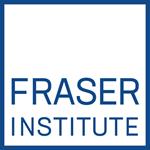
Fraser Institute News Release: Low- and middle-income Canadians hit hardest by high marginal effective tax rates
/EIN News/ -- TORONTO, April 23, 2024 (GLOBE NEWSWIRE) -- Canadian families and individuals with annual incomes between $30,000 and $60,000 face marginal effective tax rates near or above 50 per cent, finds a new study published by the Fraser Institute, an independent, non-partisan Canadian public policy think-tank.
“Canadian families with modest incomes face high marginal effective tax rates, often higher rates than Canadians in top income tax brackets,” said Jake Fuss, director of fiscal studies at the Fraser Institute, which published Marginal Effective Tax Rates for Working Families in Canada by Philip Bazel, an associate at the School of Public Policy at the University of Calgary.
The marginal effective tax rate (METR) measures the personal income taxes paid (federal and provincial) and the reductions in government benefits, resulting from earning an extra dollar. For example, the Canada Child Benefit, a monthly payment, is reduced as family income increases. In other words, the effective tax rate is the combination of taxes you pay and benefits you lose as you make more money.
Crucially, across the provinces, individuals and families with relatively modest incomes face the highest rates. This unfortunately creates a disincentive for earning additional income, as the financial benefits are significantly offset by increased taxes and/or reduced government benefits.
Canadian families with modest incomes, particularly those earning between $30,000 and $60,000, face the highest marginal effective tax rates. For example, families earning a household income of $60,000 are subject to an effective tax rate of 50 per cent or higher in every province. In Quebec, the METR is as high as 67 per cent at this income level.
Among provinces, BC has the lowest rate (38 per cent) averaging across the $30,000 to $60,000 bracket. Ontario’s rate for the $30,000 to $60,000 bracket is 6 percentage points higher (50 per cent) than high-income families at $300,000 or higher (44 per cent).
“Families with modest income brackets consistently face disproportionately high METRs, raising questions of fairness and efficiency in the tax and transfer system,” Bazel said.
“These findings highlight the need to prioritize METR reductions for low-income families.”
MEDIA CONTACT:
Philip Bazel, Senior Fellow
Fraser Institute
Jake Fuss, Director, Fiscal Studies
Fraser Institute
To arrange media interviews or for more information, please contact:
Drue MacPherson, 604-688-0221 ext. 721, drue.macpherson@fraserinstitute.org
Follow the Fraser Institute on Twitter | Like us on Facebook
The Fraser Institute is an independent Canadian public policy research and educational organization with offices in Vancouver, Calgary, Toronto, Montreal, and Halifax, and ties to a global network of think-tanks in 87 countries. Its mission is to improve the quality of life for Canadians, their families and future generations by studying, measuring and broadly communicating the effects of government policies, entrepreneurship and choice on their well-being. To protect the Institute’s independence, it does not accept grants from governments or contracts for research. Visit www.fraserinstitute.org

EIN Presswire does not exercise editorial control over third-party content provided, uploaded, published, or distributed by users of EIN Presswire. We are a distributor, not a publisher, of 3rd party content. Such content may contain the views, opinions, statements, offers, and other material of the respective users, suppliers, participants, or authors.



